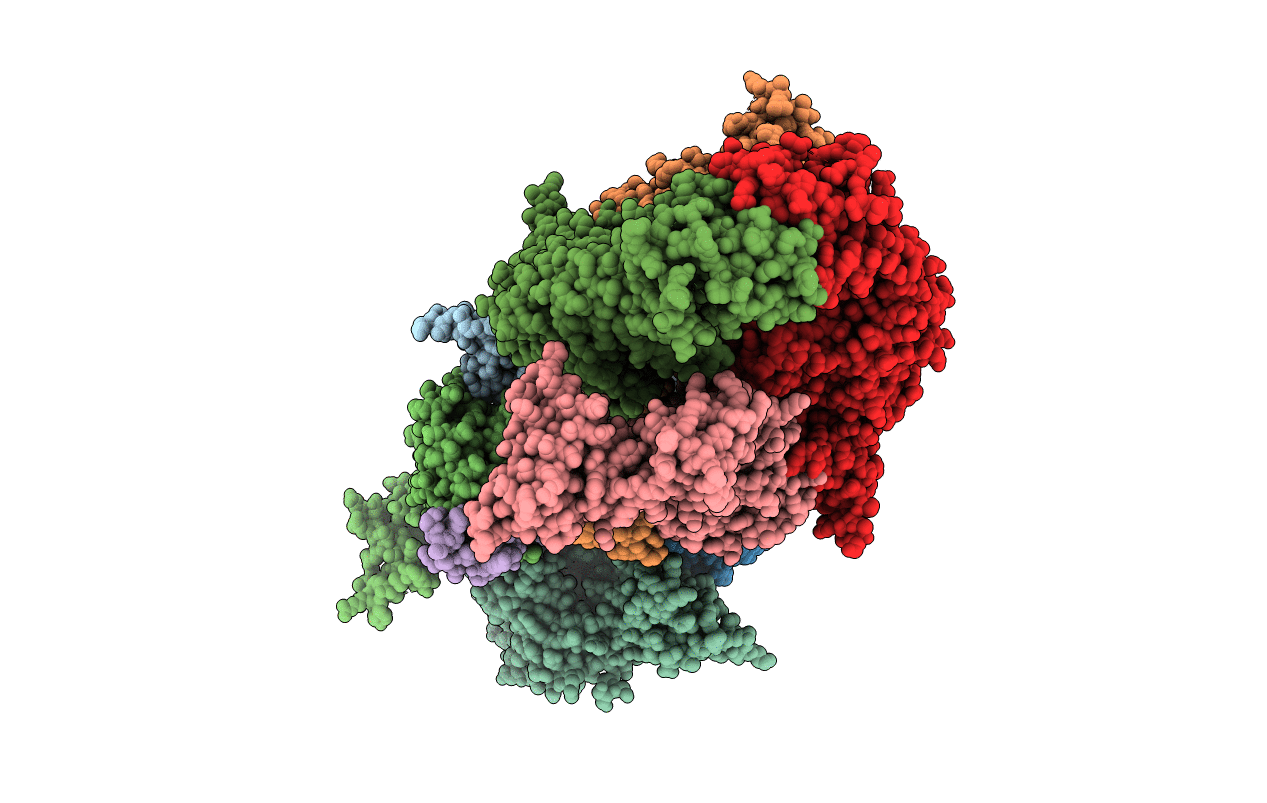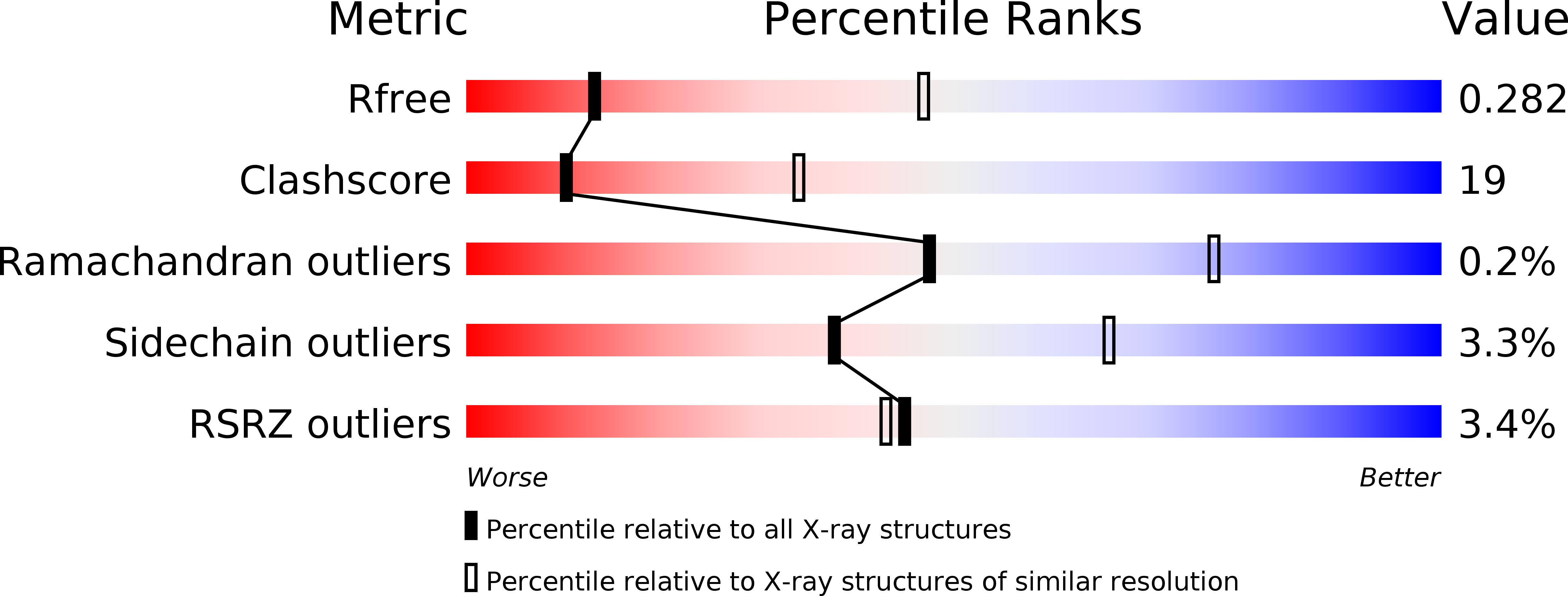
Deposition Date
2014-05-31
Release Date
2014-07-23
Last Version Date
2023-09-27
Entry Detail
PDB ID:
4TMA
Keywords:
Title:
Crystal structure of gyrase bound to its inhibitor YacG
Biological Source:
Source Organism:
Escherichia coli (Taxon ID: 1403831)
Escherichia coli (Taxon ID: 83333)
Escherichia coli (Taxon ID: 83333)
Host Organism:
Method Details:
Experimental Method:
Resolution:
3.30 Å
R-Value Free:
0.28
R-Value Work:
0.24
R-Value Observed:
0.24
Space Group:
P 21 21 21


